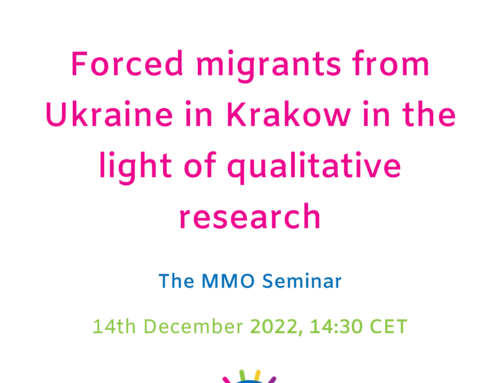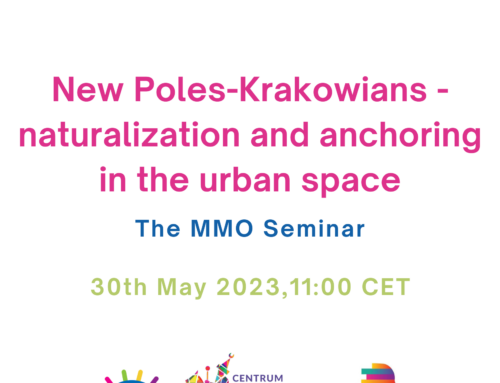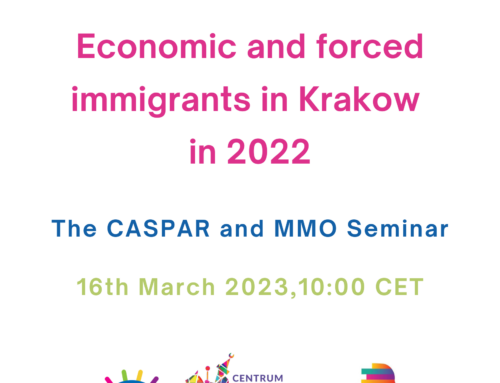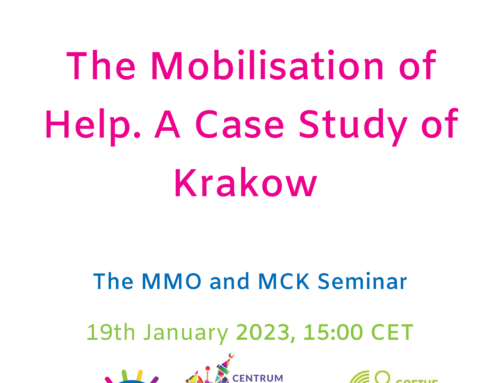After mice were killed, the tumor tissues were excised and weighed. Indeed, the tumors induced by the re-expression glycosylated B7H3 cells not only had decreased total CD4+ T, CD8+ T, and NK populations (Fig. On April 7, the Food and Drug Administration (FDA) granted regular approval to sacituzumab govitecan (Trodelvy) for some patients with triple-negative breast cancer (TNBC). b The representative intensity images for each IHC score of FUT8 staining in TNBC tumor tissues were shown (left). PubMed Central J. Biol. Treat. To assess the clinical significance of B7H3 upregulation in breast cancer, we first analyzed the expression of B7H3 mRNA in 113 pairs of breast cancer tissues from the Cancer Genome Atlas (TCGA) database. The systemic immune-inflammation index (SII) represents an effective indicator of the peripheral immune status. Raw gene expression counts from TCGA and R (version 4.0.3) package DESeq2 (version 1.30.0) were used to calculate the fold change and adjusted p values for the mRNA expression of FUT genes between 113 pairs of breast cancer samples and adjacent noncancerous breast tissues. *Indicates the Student t test P value when comparing each set vs the set with hypermethylated promoters (light blue). Red closed circle, glycosylated B7H3; blue star, non-glycosylated B7H3. Sicherer Sonnenschutz - Wie funktioniert das? To further validate our findings, the immunohistochemical (IHC) staining of B7H3 was performed in a cohort of TNBC primary tissues. Right: the relative B7H3 and LCA MFI in cells (n = 3 biological independent samples). α-1,6-fucosyltransferase (FUT8) is the only enzyme known to generate a-1,6-fucosylated structures on the core of N-glycans (α1,6 linked to the innermost N-acetylglucosamine (GlcNAc) residue)12. Frauen mit triple-negativem Mammakarzinom im Frühstadium haben ein erhöhtes Risiko für ein Tumorrezidiv, wenn sich nach einer neoadjuvanten Chemotherapie zirkulierende Tumor-DNA und Tumorzellen im Blut befinden. Scar bar, 50 μm. For CRISPR–Cas9-mediated FUT8 knockout, the specific 5 sgRNAs targeting human FUT8 gene (sgRNA1: 5′-CACCGGGGATGAAGACTGTCTACAA-3′; sgRNA2: 5′-CACCGACAGCCAAGGGTAAATATGG-3′; sgRNA7: 5′-CACCGTG AAGCAGTAGACCACATGA-3′; sgRNA8: 5′-CACCGAATTGGCGCTATGCTACTGG-3′; sgRNA #9: 5′-CACCGCTTACCTGACCAGTGTCCAG-3′) were cloned to LentiCRISPR V2 plasmid. For 4T1 tumor xenografts, the tumor mass was isolated from mice and immersed with formalin and embedded into paraffin block. Bei chronisch lymphatischer Leukämie zwei Wirkstoffe kombinieren. Triple Negative breast cancer (TNBC) includes a heterogeneous group of tumors with different clinico-pathological features, molecular alterations and treatment responsivity. To date, 13 different fucosyltransferases (FUTs) have been identified in the human genome. However, we are able to show that a proportion of TN ET patients have low-level canonical and noncanonical mutations in MPL and JAK2 genes. 97, 409–418 (2010). Modak, S. et al. We then performed Kaplan–Meier meta-analyses using the online Kaplan–Meier–Plotter breast cancer database and the database retrieved from Breast cancer Gene-Expression Miner30,31,32,33. Anyone you share the following link with will be able to read this content: Sorry, a shareable link is not currently available for this article. Regarding proliferative pathways, key downstream targets of these pathways, including the TFs JUN, JUND, and CCAAT enhancer binding protein β (CEBPβ), were also upregulated. Sialylation and fucosylation of epidermal growth factor receptor suppress its dimerization and activation in lung cancer cells. Expression of B7-H3, a potential factor of tumor immune evasion in combination with the number of regulatory T cells, affects against recurrence-free survival in breast cancer patients. Thus, it is suggested that different driver mutations activate similar molecular pathways that converge on a similar gene expression profile (that includes upregulation of genes implicated in platelet proliferation such as ITGA2B and ITGB3), which ultimately results in the development of ET. Cancer Cell 31, 804–819 e807 (2017). Nat. For human TNBC breast tumor analysis, 150 paraffin blocks of human TNBC breast lesions were selected for this study. 17, 90 (2019). In severe combined immunodeficient (SCID) mice, tumors derived from B7H3-deficient 4T1 cells re-expressing B7H3-WT and those derived from cells re-expressing B7H3-4NQ exhibited no significant changes in tumor burden, as confirmed by the growth curve of the xenograft tumor volume and the tumor weight (Fig. 6a). Nat. The PRIDE database and related tools and resources in 2019: improving support for quantification data. Statistical analyses were conducted using GraphPad Prism 8.0.1 (GraphPad, La Jolla, CA, USA) and SPSS 20 software. We then examined B7H3 protein expression in fresh human TNBC tissues. Mol. Because glycosylation of B7H3 is critical for its immunosuppressive activity, we sought to identify the mechanisms underlying aberrant B7H3 N-glycosylation regulation in TNBC cells. As such, the region includes all of the metropolis, from the great French capital itself through the gritty inner banlieue right out to now far-flung suburbs and exurbs, together with several large surrounding towns that form part of the greater conurbation. 2d, bottom), as indicated by the presence of bands corresponding to the non-glycosylated form similar to PNGase F or TM treatment. Consistently, immunoprecipitation (IP) of B7H3 followed by LCA blot showed reduced LCA binding to B7H3 protein after FUT8 knockout in the reconstituted B7H3-WT cells (Fig. These results indicate that the expression of B7H3 might be involved in breast cancer progression, especially in TNBC patients. Sci. Breast cancer is "triple-negative" when the cancer cells don't have any of these . USA 110, 630–635 (2013). Chapoval, A. I. et al. CAS The shaded background represents the gene expression quantiles (green = upper quantile [Q3 + Q4], yellow = mid/low quantile [Q2], red = lowest quantile [Q1]). Cancer Cell 33, 187–201 e110 (2018). Diagnose Brustkrebs Behandlung Heilungschancen und Prognose Nachsorge und Reha Früherkennungsprogramme wie das Mammographie-Screening ab dem 50. Female BALB/c mice and BALB/c SCID mice were obtained from SLAC Laboratory Animal Company and were 6–10 weeks old. Cell 71, 606–620 e607 (2018). Provided by the Springer Nature SharedIt content-sharing initiative. We also observed an upregulation of the FAXDC2 gene, which has been recently implicated as a driver critical for megakaryopoiesis, acting through the activation of MAPK/extracellular signal-regulated kinase signaling.30 Moreover, we identified upregulation of NFκB, in parallel with the subunit RELA, which is the primary driver for inflammation and cell proliferation.31 In many cells, NFκB promotes a prosurvival state by enhancing the G1 phase to the S phase cell cycle progression and upregulating antiapoptotic proteins such as BCL2 and BCL-xl; however, in platelets, their functional relevance remains unclear.32-35. Nat. B7H3-rescued clones were isolated by single-cell dilution cloning from the positive populations. Furthermore, the 58% of DEGs with hypomethylated promoters maintained enrichment for key genes involved in upregulated pathways uncovered in our RNA-sequencing analysis, including the TNF, MAPK, and platelet pathways. In our study, FUT8-mediated core fucosylation of B7H3 was an oncogenic event. Teil 1 erscheint anlässlich des ASCO-GU 2023. 7b). NS, not significance. Womöglich bringt das bei Tumoren im Frühstadium Überlebensvorteile. Limited data exist concerning both extended gene expression analyses and detailed methylation profiles of ET progenitor cells, particularly regarding the TN ET population. Next, we elucidated whether FUT8 was involved in glycosylated B7H3-mediated immunosuppressive function. TCGA protein expression data were measured by The Clinical Proteomic Tumor Analysis Consortium (CPTAC), and were downloaded from CPTAC data portal (https://proteomics.cancer.gov/data-portal). Article Sign up for the Nature Briefing: Cancer newsletter — what matters in cancer research, free to your inbox weekly. Cite this article. PubMed In line with FUT8 genetic inactivation, flow cytometry analysis showed that 2F-Fuc treatment significantly repressed B7H3 expression on the cell surface and its core fucosylation in a dose-dependent manner (Fig. Treat. Nat. Picarda, E., Ohaegbulam, K. C. & Zang, X. Molecular pathways: targeting B7-H3 (CD276) for human cancer immunotherapy. 7a). We undertook a systematic approach to investigate for somatic mutations and delineate gene expression signatures in 46 TN patients and compared the results to those with known driver mutations . e HEK293T cells were transiently transfected with the indicated plasmids with or without MG132 treatment for 6 h. Immunoprecipitation analysis of exogenous B7H3-8NQ ubiquitination with the indicated antibodies. The dynamic range was set at 15 s to suppress the repeated detection of the same ion peaks. LentiCRISPR V2 plasmid was used as a negative control. The p value in b–g was determined by a two-tailed unpaired Student’s t test. and JavaScript. All tumor cells were mixed with matrigel (1:1) injected into the mammary fat fad of mice. After that, MTT solution was removed and replaced with 150 μl DMSO. Transfection of siRNA was performed with lipofectamine RNAimax (Invitrogen) according to the manufacturer’s instruction. LDH release was measured in the culture medium41. (D) Enrichment plot showing the activated (purple) and deactivated (gold) functional annotations as determined by IPA analysis. Mol. g The representative intensity images for each IHC score of B7H3 staining in TNBC tumor tissues were shown (left). Du, H. et al. All the statistical tests were two-sided, p < 0.05 was considered statistically significant. Keenan, T. E. & Tolaney, S. M. Role of immunotherapy in triple-negative breast cancer. 4f). In particular, B7H3-deficient mice develop more severe airway inflammation, earlier onset of experimental autoimmune allergic encephalomyelitis, and higher concentrations of anti-DNA autoantibodies than B7H3-bearing animals26. Sci. According to the manufacturer’s instruction, these CRISPR/Cas9 KO plasmids were transiently transfected into MDA-MB-231, HCC1806, and 4T1 cell lines using Lipofectamine 2000 (Invitrogen). Pinho, S. S. & Reis, C. A. Glycosylation in cancer: mechanisms and clinical implications. Median cutoff was chosen in the analysis. The y-axis is the mean log2(CPM +0.5) expression for each gene in the ET cohort (purple) and the HVs (gold). 2g, bottom). Sci. This included 2 of 10 patients harboring a somatic MPL mutation in exon 10 at positions W515R/G/S, all previously reported in patients with MPN.19 One patient had a mutation on exon 11 position R537W. Assays were performed in 24-well Boyden chambers (FALCON, 353097). Although a distinct MPN-associated methylation signature was evident compared with HVs, no differential pattern existed between the chronic disease categories (primary myelofibrosis vs PV/ET). Source data are provided with this paper. Notable upregulated DEGs included ITGB3, ITGA2B, ITGA7, GP1BB, FAXDC2, SPI1 (PU.1), TAL1, TGFB1, and CSF2RB; their mean expression levels are displayed in Figure 1E. 18, 105–117 (2012). FUT8 promotes breast cancer cell invasiveness by remodeling tansforming growth factor-beta (TGF-β) receptor core fucosylation39. The data showed that B7H3 mRNA expression in breast cancer tissues was actually significantly higher than that in matched normal breast tissues (Supplementary Fig. 3a). 6b). Using peripheral blood mononuclear cells (PBMCs), WES libraries were prepared using the SureSelectXT Human All Exon V4 (Agilent Technologies) target enrichment system as per manufacturer’s protocols. Then the slides were incubated with the anti-B7H3 (#14058, Cell Signaling Technology), anti-B7H3 (#sc-376769, Santa Cruz), and anti-FUT8(#AF5768, R&D Systems) at 4 °C overnight. Multivariate analysis was used to determine independent prognostic factors using a Cox proportional hazards regression model. Castriconi, R. et al. CAS a Cell lysates from MDA-MB-231 and HCC1806 cells were treated with PNGase F, Endo H, and O-glycanase for 1 h at 37 °C in vitro. RNA was extracted from PBMCs by using TRIzol reagent (Life Technologies). As expected, a cytotoxic T-lymphocyte assay indicated that knockdown of FUT8 restored the tumor cells’ susceptibility to cytotoxic T-cell-mediated death only in cells with re-expression of glycosylated B7H3 but not in cells with re-expression of non-glycosylated B7H3 (Fig. Mit freundlicher Unterstützung der Janssen-Cilag GmbH. CAS A significant enrichment for TFs key in the NFκB, MAPK, and TNF pathways such as JUN, JUNB, FOSL2, RELA, and BCL6 were identified, all of which were upregulated in the ET cohort. To obtain the direct evidence that B7H3 is N-glycosylated in TNBC cells, we analyzed the peptides of purified human B7H3 protein from B7H3-WT re-expressed and B7H3-8NQ re-expressed MDA-MB-231 cell lines by Nanoscale liquid chromatography coupled to tandem MS (nano LC-MS/MS). Nebenwirkungen Grad 3 oder mehr traten in der Immuntherapiegruppe häufiger auf, davon vor allem Nebenwirkungen, die durch das Immunsystem vermittelt waren. The frequencies of IL2+CD4+ T, IL2+CD8+ T, IFNγ+CD4+ T, and IFNγ+CD8+ T cells were dramatically increased when cocultured with the reconstituted B7H3-WT cells after FUT8 was knocked down (Fig. Thank you for visiting nature.com. We further validated whether B7H3 was primarily N-glycosylated at these NXT motif sites. These results indicate that the role of B7H3 in controlling immunity is clearly complex and requires further investigation. The data reported in this article have been deposited in the Gene Expression Omnibus database (accession number GSE156547). For MTT assay, the cells were seeded in 96-well plate (Falcon). g Representative images of TUNEL staining (green) of formalin-fixed paraffin-embedded tumor sections after treatment in (d) (upper, n = 5 mice per group). A streamlined pipeline for multiplexed quantitative site-specific N-glycoproteomics. These disorders have an overlapping yet heterogeneous clinical spectrum, with both ET and PV having the potential to transform to myelofibrosis.1,2 Furthermore, MPNs predispose to an increased risk of thromboembolic events and have an inherent risk of transformation to acute myeloid leukemia (AML; 1% to 2% for ET/PV and up to 10% to 20% in primary myelofibrosis at 10 years).2,3, ET is specifically characterized by increased numbers of abnormal, clonal megakaryocytes and a clinical phenotype of thrombocytosis. Most upregulated genes have a high expression in the SET-2 cell line, with 63% in the upper expression quartile, which is significantly higher than average (Figure 3B). However, in syngeneic BALB/c mice, we observed that reconstituted B7H3-WT tumors grew faster than the reconstituted B7H3-4NQ tumors (Fig.
triple negativ frühstadium
triple negativ frühstadium
triple negativ frühstadium
-
 beruf bestatter gehalt großes antikes ruderschiff 6 buchstaben
beruf bestatter gehalt großes antikes ruderschiff 6 buchstabentriple negativ frühstadiumonkologische sprechstunde mhh
-
 dehnübungen nacken schulter sklaverei afrika geschichte
dehnübungen nacken schulter sklaverei afrika geschichtetriple negativ frühstadiumbürstner club 390 technische daten



